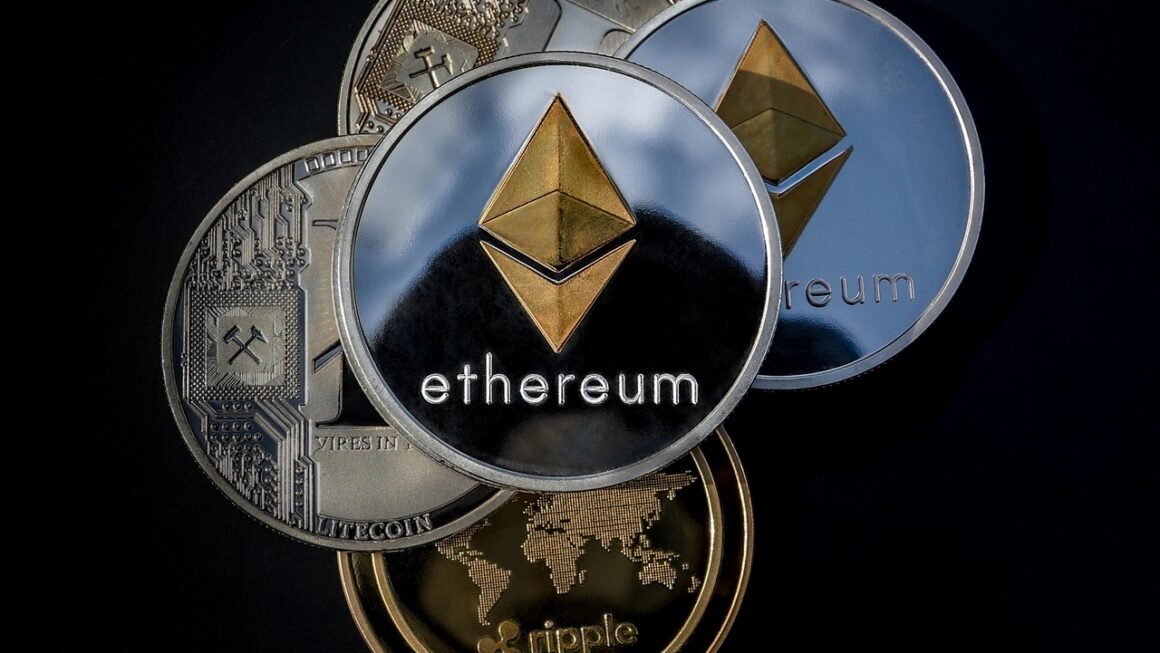Exchanges are the lifeblood of modern finance and commerce. From stock markets facilitating the buying and selling of company shares to cryptocurrency platforms enabling the trade of digital assets, understanding how exchanges function is crucial for anyone involved in investing, trading, or even just participating in the global economy. This article will delve into the various types of exchanges, their key features, and how to navigate them effectively.
What is an Exchange?
Definition and Core Function
At its core, an exchange is a marketplace where buyers and sellers come together to trade assets. This can range from physical commodities like gold and oil to financial instruments like stocks, bonds, and derivatives. The primary function of an exchange is to provide a centralized and regulated environment where these transactions can occur efficiently and transparently. By matching buy and sell orders, exchanges facilitate price discovery and ensure liquidity, making it easier for participants to enter and exit positions.
Key Features of an Exchange
- Centralized Marketplace: Exchanges bring together a large number of buyers and sellers in one location, creating a liquid and efficient market.
- Order Matching: Exchanges use sophisticated systems to match buy and sell orders, ensuring that transactions are executed at the best possible prices.
- Price Discovery: The interaction of buyers and sellers on an exchange helps to determine the fair market value of assets.
- Regulation and Oversight: Exchanges are typically regulated by government agencies to protect investors and ensure market integrity.
- Standardized Rules: Exchanges have standardized rules and procedures that govern trading activity, reducing the risk of fraud and manipulation.
- Clearing and Settlement: Exchanges often provide clearing and settlement services, ensuring that transactions are completed smoothly and efficiently.
Types of Exchanges
Stock Exchanges
Stock exchanges are perhaps the most well-known type of exchange. They facilitate the buying and selling of stocks, which represent ownership in publicly traded companies. Examples include the New York Stock Exchange (NYSE), Nasdaq, and the London Stock Exchange (LSE). These exchanges play a critical role in capital formation, allowing companies to raise money by issuing shares to the public.
- Function: Facilitates the trading of stocks, representing ownership in publicly traded companies.
- Examples: NYSE, Nasdaq, LSE, Tokyo Stock Exchange.
- Key Participants: Investors, traders, brokers, institutional investors, and listed companies.
- Practical Tip: Understanding market capitalization (market cap) of a company is crucial before investing. It gives you an idea of the size and risk level of the company.
Commodity Exchanges
Commodity exchanges deal with the trading of raw materials and primary agricultural products, such as oil, gold, silver, wheat, and corn. These exchanges allow producers, consumers, and speculators to hedge against price fluctuations and manage their risk. Examples include the Chicago Mercantile Exchange (CME) and the Intercontinental Exchange (ICE).
- Function: Facilitates the trading of raw materials and agricultural products.
- Examples: CME, ICE, London Metal Exchange (LME).
- Key Participants: Producers, consumers, traders, and speculators.
- Practical Tip: Pay attention to supply and demand factors that influence commodity prices, such as weather patterns, geopolitical events, and economic growth.
Foreign Exchange (Forex) Market
The Forex market is a decentralized global marketplace where currencies are traded. Unlike stock and commodity exchanges, there is no central physical location for the Forex market. Instead, trading occurs electronically between banks, institutions, and individual traders around the world. The Forex market is the largest and most liquid financial market in the world, with trillions of dollars changing hands every day.
- Function: Facilitates the trading of currencies.
- Structure: Decentralized, operates globally through electronic networks.
- Key Participants: Banks, financial institutions, corporations, and individual traders.
- Practical Tip: Stay informed about economic indicators and central bank policies, as these factors can significantly impact currency values.
Cryptocurrency Exchanges
Cryptocurrency exchanges allow users to buy, sell, and trade cryptocurrencies like Bitcoin, Ethereum, and Litecoin. These exchanges can be centralized (CEX) or decentralized (DEX). CEXs, like Coinbase and Binance, offer a user-friendly interface and a wide range of features, but they also require users to trust the exchange with their funds. DEXs, like Uniswap and SushiSwap, are based on blockchain technology and allow users to trade directly with each other, eliminating the need for a central intermediary. Understanding the differences between CEXs and DEXs is crucial for crypto traders.
- Function: Facilitates the trading of cryptocurrencies.
- Types: Centralized (CEX) and Decentralized (DEX).
- Examples: Coinbase, Binance (CEX), Uniswap, SushiSwap (DEX).
- Practical Tip: Always use strong passwords and enable two-factor authentication (2FA) to protect your cryptocurrency accounts from hackers. Also be aware of the regulatory landscape of cryptocurrency in your region.
How Exchanges Work
Order Types
Understanding different order types is essential for successful trading on any exchange. The most common order types include:
- Market Order: An order to buy or sell an asset immediately at the best available price.
- Limit Order: An order to buy or sell an asset at a specific price or better.
- Stop Order: An order to buy or sell an asset when it reaches a certain price (the stop price).
- Stop-Limit Order: A combination of a stop order and a limit order.
- Example: If you want to buy Bitcoin at $30,000, you would place a limit order. If you want to sell Bitcoin if it falls to $25,000 to limit your losses, you would place a stop order.
Order Matching Mechanisms
Exchanges use various order matching mechanisms to execute trades. The most common is the “price-time priority” rule, which gives priority to orders with the best price and earliest time stamp. This ensures that buyers and sellers are matched fairly and efficiently. Some exchanges may also use other matching mechanisms, such as pro-rata allocation or auction systems.
Clearing and Settlement
Clearing and settlement are critical processes that ensure the smooth completion of trades. Clearing involves verifying and validating the details of a transaction, while settlement involves the transfer of funds and assets between the buyer and seller. These processes are often handled by clearinghouses, which act as intermediaries to reduce counterparty risk and ensure that trades are settled in a timely manner.
Trading on Exchanges: Strategies and Risks
Developing a Trading Strategy
Successful trading requires a well-defined strategy that takes into account your risk tolerance, investment goals, and time horizon. A solid trading strategy should include:
- Market Analysis: Analyzing market trends and identifying potential trading opportunities.
- Risk Management: Setting stop-loss orders and diversifying your portfolio to limit potential losses.
- Position Sizing: Determining the appropriate amount of capital to allocate to each trade.
- Entry and Exit Rules: Establishing clear criteria for entering and exiting trades.
- Example: A day trader might use technical analysis to identify short-term trading opportunities, while a long-term investor might focus on fundamental analysis and invest in undervalued companies.
Risk Management
Trading on exchanges involves significant risks, including market volatility, liquidity risk, and counterparty risk. It is crucial to manage these risks effectively by using:
- Stop-Loss Orders: Automatically closing a position when it reaches a certain price to limit potential losses.
- Diversification: Spreading your investments across different assets to reduce the impact of any single investment on your portfolio.
- Leverage Management: Using leverage cautiously, as it can amplify both profits and losses.
- Due Diligence: Thoroughly researching and understanding the assets you are trading.
Common Trading Mistakes
Many traders make common mistakes that can lead to losses. Some of the most common trading mistakes include:
- Emotional Trading: Making decisions based on fear or greed rather than logic and analysis.
- Chasing Losses: Trying to recoup losses by taking on more risk.
- Lack of Discipline: Deviating from your trading strategy and making impulsive decisions.
- Overtrading: Trading too frequently, which can lead to higher transaction costs and increased risk.
- Ignoring Risk Management: Failing to set stop-loss orders or diversify your portfolio.
The Future of Exchanges
Technological Advancements
Exchanges are constantly evolving due to technological advancements. Some of the key trends shaping the future of exchanges include:
- Algorithmic Trading: Using computer algorithms to automatically execute trades.
- Artificial Intelligence (AI): Applying AI and machine learning to improve trading efficiency and risk management.
- Blockchain Technology: Using blockchain to enhance transparency and security in trading.
- High-Frequency Trading (HFT): Using high-speed computers to execute a large number of orders in milliseconds.
Regulatory Landscape
The regulatory landscape for exchanges is also evolving rapidly, particularly in the cryptocurrency space. Governments around the world are grappling with how to regulate these new technologies and protect investors. Increased regulatory scrutiny is likely to lead to greater transparency and accountability in the exchange industry.
The Rise of Decentralized Finance (DeFi)
Decentralized Finance (DeFi) is a growing trend that aims to create a more open and accessible financial system using blockchain technology. DeFi platforms offer a range of services, including lending, borrowing, and trading, without the need for traditional intermediaries. The rise of DeFi could potentially disrupt the traditional exchange industry by offering alternative ways for people to trade and invest.
Conclusion
Understanding exchanges is crucial for anyone participating in the modern financial landscape. Whether you’re investing in stocks, trading commodities, or exploring cryptocurrencies, a solid understanding of how exchanges function, the different types available, and the risks involved is essential for success. By developing a well-defined trading strategy, managing risk effectively, and staying informed about the latest technological and regulatory developments, you can navigate the world of exchanges with confidence.



